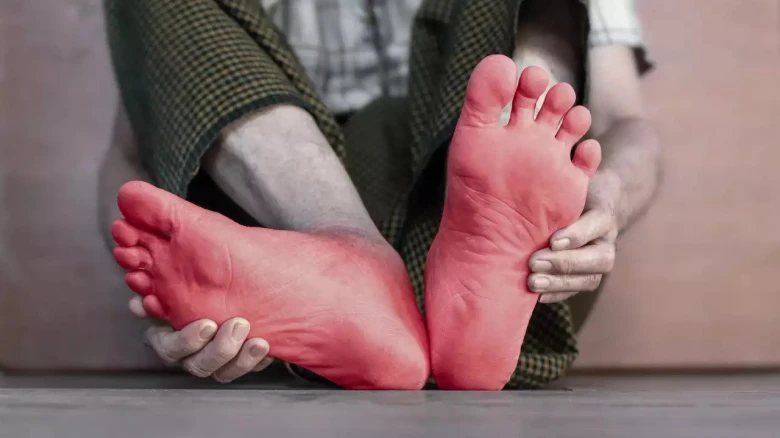Diabetes can lead to poor circulation and nerve damage, increasing the risk of foot problems...
Digital Desk: Maintaining proper foot hygiene is crucial for everyone, but it is especially important for diabetes patients. Diabetes can lead to poor circulation and nerve damage, increasing the risk of foot problems. One simple yet effective habit to include in your daily routine is changing your socks every day. Here’s why it matters: a few other essential foot care guidelines and early warning signs to watch out for.
Importance of Changing Socks Daily
Changing socks daily helps prevent moisture buildup, which can lead to fungal infections and other foot issues. Clean, dry socks keep your feet comfortable and reduce the risk of blisters and sores, which can be particularly troublesome for diabetes patients.
Essential Foot Care Guidelines
1. Daily Foot Inspections: Examine your feet every day for cuts, blisters, redness, or swelling. Use a mirror or ask for help if you have difficulty seeing the bottoms of your feet.
2. Wash and Dry Feet Properly: Clean your feet daily with lukewarm water and mild soap. Dry them thoroughly, especially between the toes, to prevent fungal infections.
3. Moisturize: Apply a thin layer of moisturizer to the tops and bottoms of your feet to keep the skin soft and prevent cracking. Avoid the areas between your toes, as excessive moisture can promote fungal growth.
4. Trim Nails Carefully: Cut your toenails straight across and file the edges. Avoid cutting too close to the skin to prevent ingrown toenails.
5. Wear Proper Footwear: Choose well-fitting, supportive shoes that protect your feet. Avoid walking barefoot, even at home, to reduce the risk of injury.
6. Regular Check-ups: Visit a podiatrist regularly for professional foot care and to catch any potential issues early.
Early Warning Signs for Diabetes Patients
Recognizing the early signs of foot problems can prevent serious complications. Here are a few symptoms to watch out for:
1. Numbness or Tingling: These sensations can indicate nerve damage (neuropathy), which is common in diabetes patients.
2. Swelling: Persistent swelling can signal poor circulation or an infection.
3. Changes in Skin Color: Red, blue, or dark patches on the feet can indicate poor blood flow or an infection.
4. Wounds or Sores That Don’t Heal: Slow-healing cuts or blisters may suggest an underlying issue, such as poor circulation or high blood sugar levels.
5. Pain: Any persistent pain in your feet or legs should be evaluated by a healthcare professional.
For diabetes patients, foot care is not just about comfort but also about preventing serious health complications. By changing your socks daily, following proper foot care guidelines, and being vigilant about early warning signs, you can protect your feet and maintain overall health. Always consult with your healthcare provider for personalized advice and treatment options.
Taking these proactive steps can help you manage your diabetes effectively and keep your feet healthy and strong.








Leave A Comment